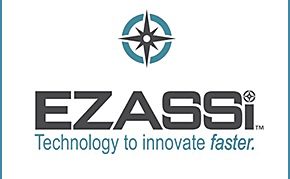Living independently is a fundamental desire for many individuals, especially those with mobility challenges. As society evolves, so do the solutions that help enhance this independence. Accessible living solutions, such as home modifications and assistive technologies, transform how people navigate their environment. These adaptations not only improve physical accessibility but also build confidence and personal autonomy. By understanding the range of available solutions, individuals can take proactive steps towards enhancing their quality of life. This article delves into various accessible living solutions and their impact on fostering independence.
Innovative Technologies for Home Living
Technological advancements have played a significant role in providing innovative solutions for home living. Smart home devices are now designed to cater to diverse needs, enabling users to control their environment seamlessly. Voice-activated systems, automated lighting, and temperature controls are just a few options available. These systems assist individuals in managing daily tasks with ease and promote excellent safety. Additionally, terms like home lifts have emerged to provide physical access where traditional solutions fall short. Individuals can benefit from StiltzHealthCare for comprehensive options, ensuring they enjoy their homes without barriers. As technology advances, these tools’ integration will expand and evolve, ensuring users can maintain their independence.
Home Modifications for Enhanced Accessibility
Home modifications are essential in creating accessible living environments that facilitate independent living. Simple changes can significantly enhance safety and mobility. Moreover, thoughtful modifications can transform bathrooms and kitchens into safer, more user-friendly spaces. Transitioning from traditional to barrier-free shower designs is an exemplary change that allows individuals to maintain their dignity while navigating their personal care routines. Alongside structural changes, it’s essential to assess the accessibility of furniture and layouts in a home. By adopting a holistic approach to modifications, individuals create a supportive environment that allows them to thrive independently.
Assistive Devices and Mobility Aids
Using assistive devices and mobility aids can significantly enhance an individual’s ability to live independently. Options like wheelchairs, walkers, and canes support those with mobility challenges. However, more advanced solutions like powered scooters and stairlifts also contribute to greater freedom of movement. Daily activities become less daunting when individuals have access to reliable mobility aids. Furthermore, selecting high-quality assistive devices is key; researching providers of home lifts and other mobility solutions is crucial to making informed decisions. Selecting the right equipment enables users to enjoy their homes and community spaces without feeling constrained.
The Role of Community Support and Resources
Community support has a vital role in ensuring individuals can live independently. Various local programs and housing initiatives assist with accessible living solutions, focusing on creating more inclusive environments. Connecting with healthcare professionals, social workers, and advocacy groups is essential for individuals seeking guidance. These resources can help identify specific needs and recommend appropriate modifications or assistive technologies. Engaging with peer support groups fosters a sense of belonging and shared experiences. Understanding available local resources empowers individuals to navigate their independence more effectively. Strong community networks can ultimately be transformative, opening doors to numerous opportunities for growth and stability.
Financial Considerations and Funding Options
Financing accessible living solutions can be a concern for many individuals. Exploring funding options, including grants and loans specifically designed for home modifications, can ease financial burdens. Insurance policies may cover specific assistive devices; however, individuals should review their particular plans for limitations and coverage details. Nonprofit organizations often provide essential resources for those in need, helping to bridge financial gaps. One popular option is discussing potential home equity conversion with financial advisors. By understanding available financial opportunities, individuals can make informed decisions about their path toward independent living.
The Benefits of Independent Living
Living independently offers numerous physical and emotional benefits that foster personal growth. Individuals with access to the appropriate living solutions report higher satisfaction and a sense of control over their lives. Independence encourages self-reliance, which significantly boosts self-confidence and mental well-being. Furthermore, maintaining independence can lead to stronger connections with family and friends, enhancing social interactions. As individuals become more competent in managing daily tasks, they cultivate a more fulfilling life, actively engaging in their communities. Embracing independent living solutions contributes to improved quality of life, marking a vital step toward empowerment.
Accessible living solutions have the potential to transform lives by promoting independence for individuals with mobility challenges. From innovative technologies to community resources and financial support systems, a comprehensive approach is necessary for fostering independent living. By leveraging these solutions, individuals can reclaim their autonomy, navigate their environments, and thrive without limitations. Understanding the range of available resources empowers individuals and their families to make informed choices, enhancing their quality of life and encouraging personal growth. As the landscape of accessible living evolves, individuals can look forward to a future marked by opportunity and independence.




































